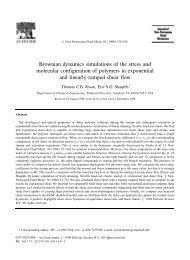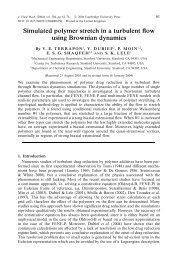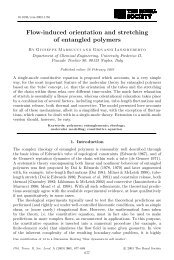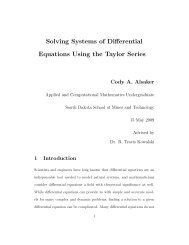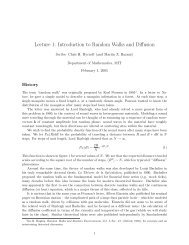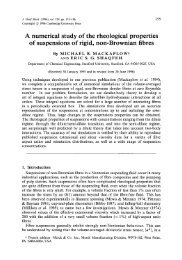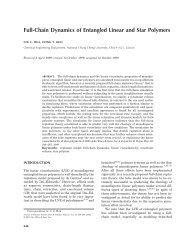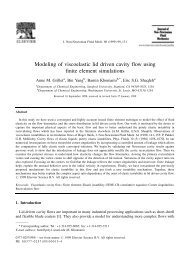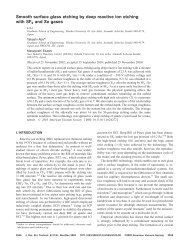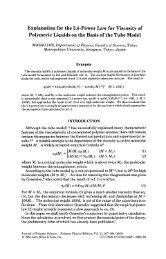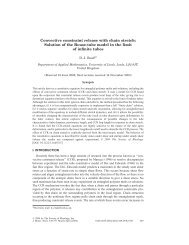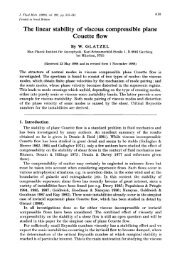Molecular modelling of entangled polymer fluids under flow The ...
Molecular modelling of entangled polymer fluids under flow The ...
Molecular modelling of entangled polymer fluids under flow The ...
Create successful ePaper yourself
Turn your PDF publications into a flip-book with our unique Google optimized e-Paper software.
2.2. GAUSSIAN CHAINS 17<br />
L<br />
α<br />
β<br />
Figure 2.3: <strong>The</strong> derivation <strong>of</strong> a molecular expression for stress<br />
through finite difference definitions <strong>of</strong> the derivative which become exact in the limit<br />
<strong>of</strong> large N.<br />
2.2.6 <strong>Molecular</strong> expression for stress<br />
Equations 2.8 and 2.9 define a system that can be solved to find the molecular shape,<br />
R(s). From this information a variety <strong>of</strong> measurable quantities can be deduced, including<br />
the macroscopic stress tensor, σ. To compute σ for an ensemble <strong>of</strong> Gaussian<br />
≈ ≈<br />
chains the configuration <strong>of</strong> the chains must be known above some length-scale and<br />
chain segments on length-scales below this scale must be locally at equilibrium. In this<br />
calculation the cut <strong>of</strong>f length-scale is taken to be the Kuhn step length, b, although<br />
<strong>of</strong>ten in practice, the molecule is only disturbed from equilibrium on length-scales much<br />
larger than this. This choice <strong>of</strong> length-scale corresponds to dividing the molecule into<br />
N subchains.<br />
An expression for the stress is obtained by considering a cube <strong>of</strong> length L, where<br />
L is large enough to be much greater than the end to end vector <strong>of</strong> a subchain and is



